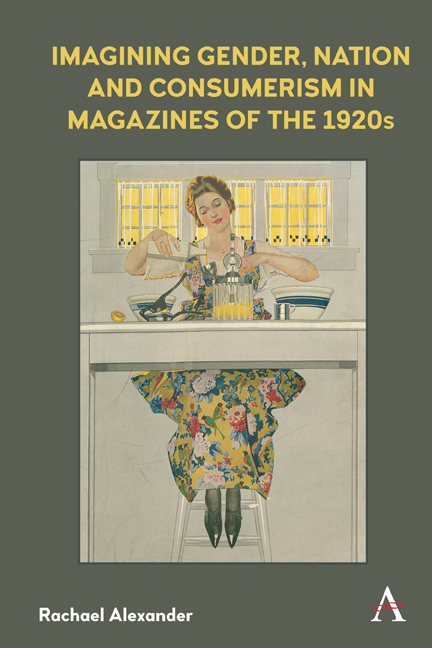Book contents
- Frontmatter
- Dedication
- Contents
- List of Illustrations
- Acknowledgements
- Introduction
- 1 Two Home Journals: A Comparative Approach
- 2 The Art of Femininity: Aspiration and Self-Improvement
- 3 The Home and Domesticity: Readers, Consumers, Citizens
- 4 Fashionable, Beautiful, Moral: Idealised Images of Femininity
- Conclusion
- Appendix: Content Analysis of Advertising from the Ladies’ Home Journal and Canadian Home Journal
- Notes
- References
- Index
1 - Two Home Journals: A Comparative Approach
Published online by Cambridge University Press: 14 December 2021
- Frontmatter
- Dedication
- Contents
- List of Illustrations
- Acknowledgements
- Introduction
- 1 Two Home Journals: A Comparative Approach
- 2 The Art of Femininity: Aspiration and Self-Improvement
- 3 The Home and Domesticity: Readers, Consumers, Citizens
- 4 Fashionable, Beautiful, Moral: Idealised Images of Femininity
- Conclusion
- Appendix: Content Analysis of Advertising from the Ladies’ Home Journal and Canadian Home Journal
- Notes
- References
- Index
Summary
Given that magazines – in particular popular or mass-market magazines – are spaces in which literary, ideological, and commercial interests intersect, a methodology which accounts for these diverse interests is crucial. Literary scholars analysing magazines have tended to privilege written above visual content, as well as prioritising editorial above commercial material. Like many periodical studies scholars, I argue that the magazine is a collaborative, multiauthored text and is therefore best interrogated through an interdisciplinary approach which challenges hierarchical value-based assumptions. This work aligns its approach with that of Faye Hammill, Paul Hjartarson and Hannah McGregor, who seek to maintain
a commitment to reading magazines not as transparent containers of information but, rather, as complex media artifacts whose relation to their cultural and political contexts is articulated through rhythms of seriality, patterns of remediation, and material systems of production and circulation. (15)
In this chapter, I will explore my own commitment to reading the Ladies’ Home Journal and Canadian Home Journal using a combination of formal and contextual analysis. This requires a synthesis of approaches drawn from different disciplines, outlined in what follows. The chapter has two main aims: first, to establish the critical framework for the detailed analysis that follows in Chapters 2–4; and second, to contribute to current methodological debate in the field of periodical studies. While this study takes two specific women's magazines as its central focus, its methodological approach is applicable far beyond these titles and national contexts. This chapter provides the theoretical and methodological foundation for the chapters that follow, but also highlights some of the ways that this approach may be useful for future research. Beginning with contextual discussions of mass and popular culture, women's mass-market magazines, and serial print media, this chapter will question the terms used to describe these magazines, the print cultures they entered into and became an integral part of, and the existing scholarship which provides a basis for understanding them. It will then detail the methodological approaches which will allow for the comparative consideration of these magazines as collaborative literary texts, cultural artefacts and commercial products.
- Type
- Chapter
- Information
- Publisher: Anthem PressPrint publication year: 2021

